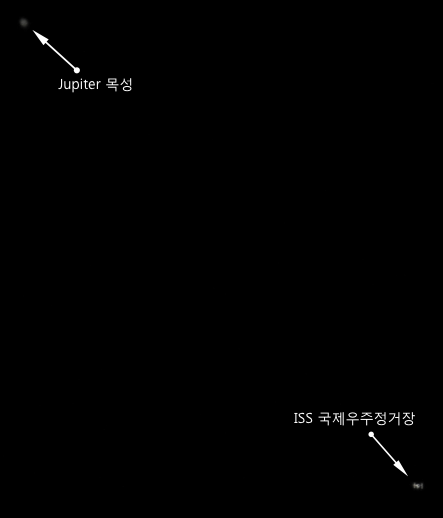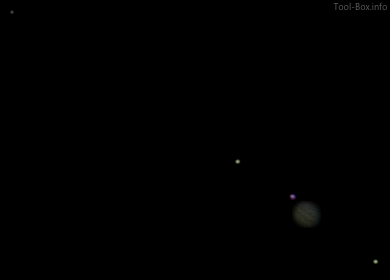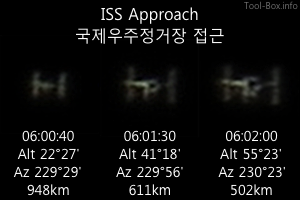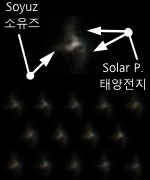ISS passing near Jupiter
Posted by Wesley on
ISS passes near Jupiter
Yesterday's passing of International Space Station had another interesting characteristic. It came within about 0.65 arc degrees of Jupiter at the closest, and I ended up taking both objects at once in several frames. This crop, reduced to 30%, shows one of such instances. You can see that the station looked both larger and brighter than Jupiter.

Jovian system
Callisto - Europa - Ganymede - Jupiter - Io
Callisto - Europa - Ganymede - Jupiter - Io
As for Jupiter itself, I photographed its system slightly later. Ganymede was pulling out of Jupiter and was barely visible outside of Jupiter's bright disc.
Time: 2013-11-12 06:02 - 06:23 KST
Top: 1200mm (reduced to 30%) - ISO 80 - 1/640s - 06:02
Bottom: 1200mm, stacked using RegiStax 6.1.0.8
- Jupiter: ISO 80 - 1/320s - 06:20, 7 frames
- Satellites: ISO 800 - 1/10s - 06:23, 27 frames
Location: Suwon, Korea






